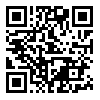Wed, Apr 2, 2025
[Archive]
Volume 19, Issue 5 (Suppl- 2021)
IJRM 2021, 19(5): 329-329 |
Back to browse issues page
Download citation:
BibTeX | RIS | EndNote | Medlars | ProCite | Reference Manager | RefWorks
Send citation to:



BibTeX | RIS | EndNote | Medlars | ProCite | Reference Manager | RefWorks
Send citation to:
Yazdi A, Montazeri F, Sheikhha MH, Nikounahad N. P-162 rs1256049 in ESR2 gene is not associated with poor ovarian response in assisted reproductive technology. IJRM 2021; 19 (5) :329-329
URL: http://ijrm.ir/article-1-3005-en.html
URL: http://ijrm.ir/article-1-3005-en.html
1- Biology Department, Faculty of Sciences, Science and Art University, Yazd, Iran.
2- Abortion Research Center, Yazd Reproductive Sciences Institute, Shahid Sadoughi University of Medical Sciences, Yazd, Iran. ,F_montazeri60@outlook.com
3- Biotechnology Research Center, International Campus, Shahid Sadoughi University of Medical Sciences, Yazd, Iran.
2- Abortion Research Center, Yazd Reproductive Sciences Institute, Shahid Sadoughi University of Medical Sciences, Yazd, Iran. ,
3- Biotechnology Research Center, International Campus, Shahid Sadoughi University of Medical Sciences, Yazd, Iran.
Abstract: (233 Views)
Background: In vitro fertilization (IVF) is a common approach for infertile couples with different etiologies. In a standard IVF cycle, exogenous follicle stimulating factor (FSH) is administered for ovarian stimulation. Numerous studies have been performed to determine individual variability in the ovarian response to gonadotropins in routine stimulation protocols. Different factors including hormonal FSH anti mullerian hormone, functional like antral follicle count (AFC), or genetic markers have been studied for optimizing individualized dose of exogenous gonadotropin in available protocols. Mutations in the genes coding for FSH receptor, luteinizing hormone receptor, estrogen receptor (ESR) and anti mullerian hormone receptor may influence ovarian response.
Objective: Considering the vital role of estrogen in ovulation, we aimed to investigate the SNP in position 1082 G/A (rs1256049) of the beta-estrogen receptor gene (ESR2) gene that may be correlated with an altered response to FSH in IVF cycles.
Materials and Methods: In this study, 200 women with poor ovarian resesponse and 40 women with good response were studied in terms of polymorphism RsaI 1082 G>A of ESR2 gene. Different genotypes of this polymorphism (GG, AG, AA) were determined using RFLP-PCR technique and using RsaI restriction enzyme.
Results: Statistical analysis was performed using SPSS software and appropriate statistical tests. Finding showed that there was no significant difference between the genotypic distribution of the under-studied polymorphism and the allele frequency with in and between groups.
Conclusion: Our finding suggests the polymorphism 1082 G > A of ESR2 gene is not related to poor ovarian response. However, the mechanism involved in this relationship is still unknown and considering the polymorphic nature of the ESR2gene (around 1800 SNP), more studies are needed to ascertain this relationship. In fact, more understanding of these genomic variants would help to managing controlled ovarian stimulation protocol, individually. Generally, the study of SNPs of the reproductive hormone receptor genes is a remarkable field of research that could provide us with new evidence about the way each woman responds to exogenous gonadotropin administration during ovulation induction.
Objective: Considering the vital role of estrogen in ovulation, we aimed to investigate the SNP in position 1082 G/A (rs1256049) of the beta-estrogen receptor gene (ESR2) gene that may be correlated with an altered response to FSH in IVF cycles.
Materials and Methods: In this study, 200 women with poor ovarian resesponse and 40 women with good response were studied in terms of polymorphism RsaI 1082 G>A of ESR2 gene. Different genotypes of this polymorphism (GG, AG, AA) were determined using RFLP-PCR technique and using RsaI restriction enzyme.
Results: Statistical analysis was performed using SPSS software and appropriate statistical tests. Finding showed that there was no significant difference between the genotypic distribution of the under-studied polymorphism and the allele frequency with in and between groups.
Conclusion: Our finding suggests the polymorphism 1082 G > A of ESR2 gene is not related to poor ovarian response. However, the mechanism involved in this relationship is still unknown and considering the polymorphic nature of the ESR2gene (around 1800 SNP), more studies are needed to ascertain this relationship. In fact, more understanding of these genomic variants would help to managing controlled ovarian stimulation protocol, individually. Generally, the study of SNPs of the reproductive hormone receptor genes is a remarkable field of research that could provide us with new evidence about the way each woman responds to exogenous gonadotropin administration during ovulation induction.
Type of Study: Congress Abstract |
Subject:
Fertility & Infertility
Send email to the article author
| Rights and permissions | |
 |
This work is licensed under a Creative Commons Attribution-NonCommercial 4.0 International License. |




